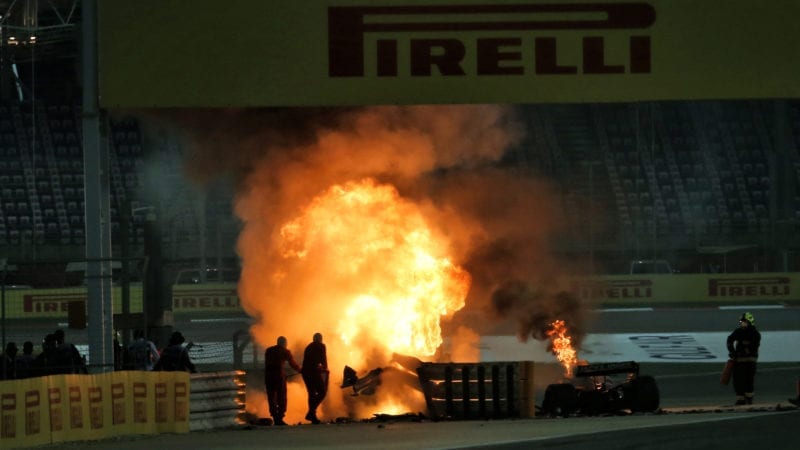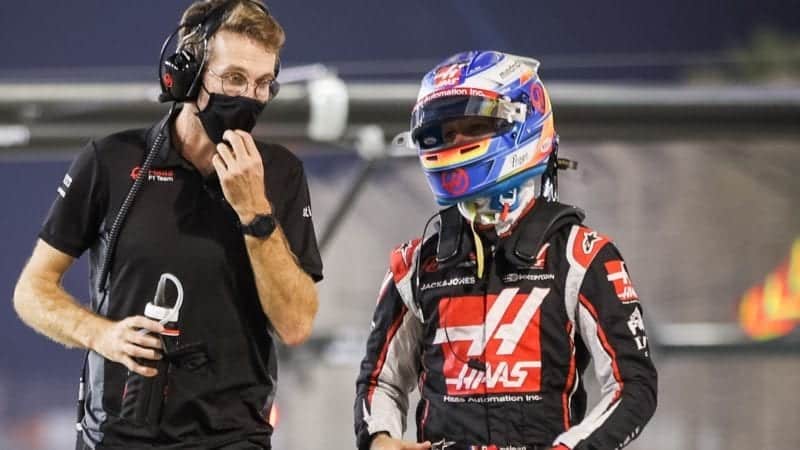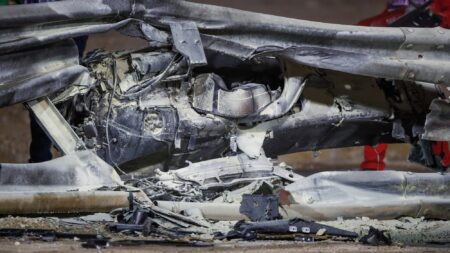A ‘chin cover’ partially seals the base of the helmet, “which vastly reduces the amount of air or fumes going in from the bottom,” says Cohen.
This ensures that most air must enter via the ventilation ducts, designed with the knowledge that the helmet will mostly be moving at over 100mph when the visor is down. “The main ventilation channels are fitted with air filters which reduce the airflow, especially when the helmet is not moving. No airflow on the helmet means no air goes through the channels.”
With the visor in place, this means that there’s limited opportunity for smoke to enter, although it’s not a complete seal for obvious reasons. “We need ventilation, defogging or fog control, and that involves a little bit of air circulation inside the helmet,” says Cohen.
Regulations focus on impact protection but all FIA-accredited helmets for F1 have to provide enough protection from heat and flames to allow a driver to escape, with the fire test requiring components to withstand flames of almost 800C for up to 40 seconds.
“It was an enormous relief to see Romain Grosjean jumping out and over the armco barrier and getting out of this inferno,” says Cohen. “What is striking is the fact that he was able to get out of the car entirely by himself. This says a lot because the deceleration must have been huge but yet all of the systems worked well enough to mitigate the effect on the driver and he was fully conscious, he came out by himself, it’s amazing. Amazing.”
The crash also offers the potential to further improve safety. Cohen said that Bell will be gathering information from the crash that will inform future developments.



